Without question one of the most affordable and thus commonly upgraded components by PC builders and enthusiasts alike is the CPU cooler. While things have definitely improved in the past few years, upgrading the stock cooler that comes with AMD or Intel processors still grant you a number of improvements. Generally the main goal is to lower operating temperatures, but aftermarket coolers can also reduce operating volumes and provide a greater overclocking headroom.
There are literally hundreds of options to choose from, though not all of them will deliver the desired results. Numerous times we've found third party coolers that perform no better than the standard box cooler, or worse, improve things at the cost of increased noise output, making them impractical upgrades.
But first things first, you need to make sure that the cooler you are considering is compatible with your platform of choice and that it will fit inside your case. Another aspect is value, as aftermarket CPU coolers can vary a lot in price. For example, LGA1155-compatible coolers start at around $15 and can go above $100, so it is important to work out how much you are going to need to spend.

It is also worth mentioning that most aftermarket products are air coolers, but there's also a wealth of liquid cooling systems on offer as well. However today we're going to avoid going down that path, as we take a look at four new air cooling products.
Included in the comparison are the Thermalright True Spirit 140, Prolimatech Panther, Thermaltake Frio Advanced and Noctua NH-C14. All four are designed to support multiple platforms on both AMD and Intel camps. They range in price from just $40 all the way to $85, so it will be interesting to see how they compare and more importantly what they offer over stock cooling units.
We'll go into detail one by one and then put them to the test...
Thermalright True Spirit 140
Recently Thermalright has focused their attention towards budget cooling units, which is a surprising move from a company that almost defined the high-end air cooler. If you look at the products offered by Thermalright before the True Spirit line came about you will find the Venomous X ($70), Silver Arrow ($85), Archon ($85), AXP-140 ($70) and MUX-120 ($60).
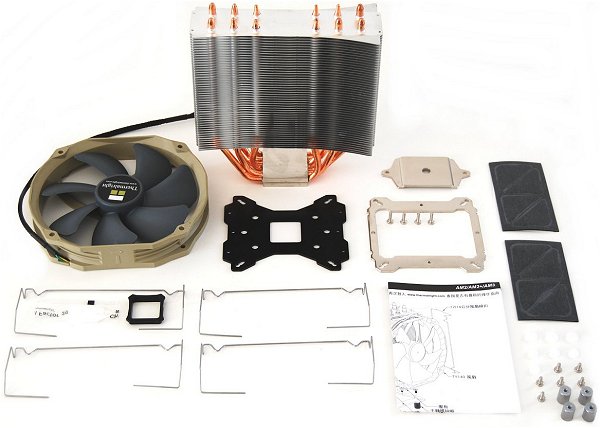
The Thermalright True Spirit 140 is set to cost just $40, with an alternative version using a 120mm fan version at the bargain basement price of $30.
We hear the True Spirit range is designed to set a new value benchmark by using a high quality heatsink. The heatsink utilizes half a dozen 6mm copper heatpipes that pass through a pure copper base that has been nickel plated for a mirror shine.
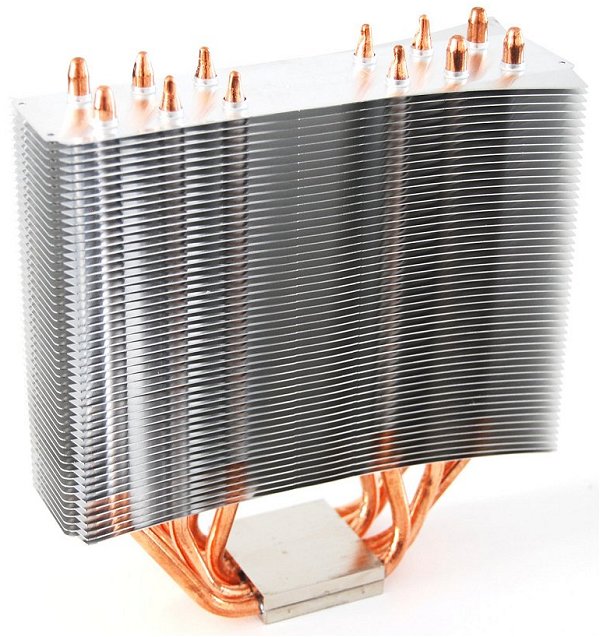
The heatsink itself boasts that patented Thermalright Ultra style heatsink fin array which provides a huge 150mm by 125mm dispersion area. This allows the True Spirit 140 to take full advantage of that 140mm Thermalright TY-140 PWM fan which produces just 21dBA of noise at the maximum speed of 1300 RPM.
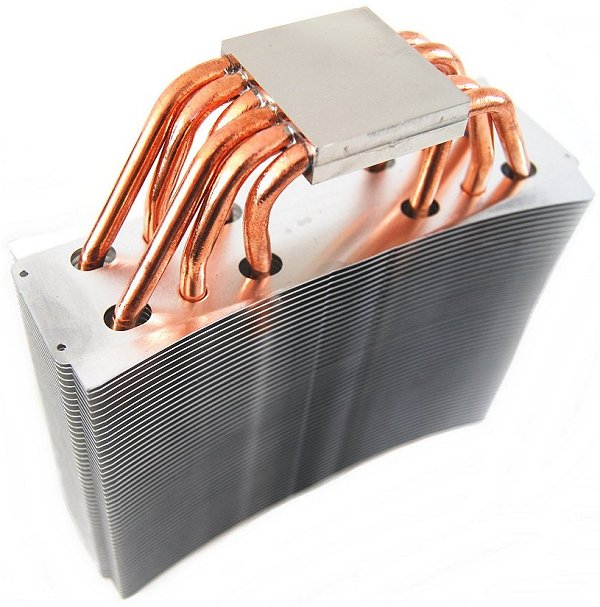
The cooler's 800 gram weight suggests this is a very large unit. Dimensions of 155mm long, 53mm wide and 170mm tall make this anything but small. The weight and size specifications alone make the $40 price point hard to believe.
Another advantage is that out of the box, the True Spirit 140 can be installed on either AMD AM2/AM2+/AM3 or Intel LGA775/1155/1156/1366 platforms without having to purchase any additional mounting kits. That said, those seeking LGA2011 support will be required to purchase a separate mounting kit as that platform was released after the True Spirit 140 was designed.

The installation process for either AMD or Intel platforms is the same. The process requires rear access to the motherboard, though this shouldn't be a big issue with most of today’s quality computer cases that provide this.
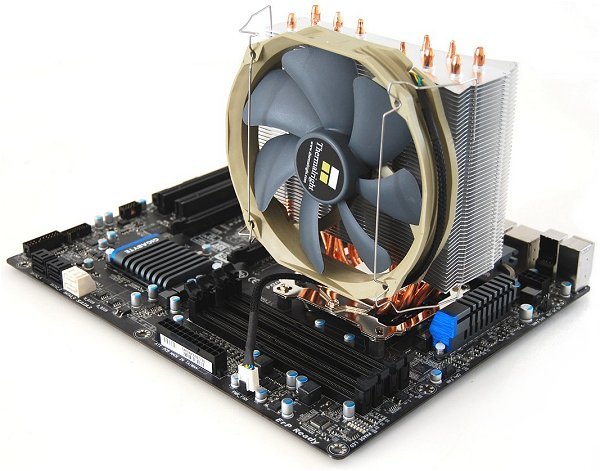
Overall we found the installation a little too fiddly, especially when compared to the other coolers featured in this article. Not only is the mounting process for the heatsink a bit awkward but the fan clips are also a pain in the proverbial, and we found mounting the 140mm fan took some persuasion. Finally, Thermalright offers a comprehensive compatibility list for the True Spirit 140 on their website, so be sure to check your motherboard off the list before purchasing.
Prolimatech Panther
Prolimatech became a well-known manufacturer for their high performance Megahalems air cooler, then went on to create other competitive products such as the Mega Shadow, Super Mega, Armageddon and Genesis. At the time of their arrival all these products had one thing in common: their high cost. In general, they were all expensive heatsinks costing upwards of $70 without a fan.
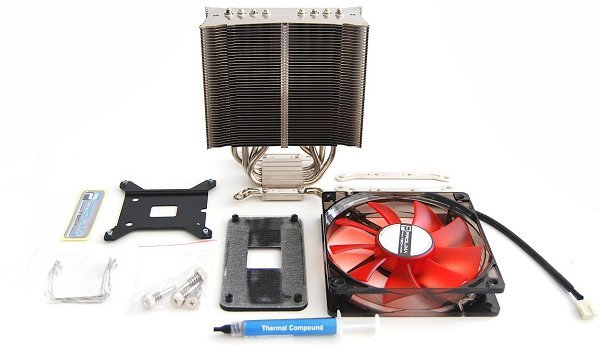
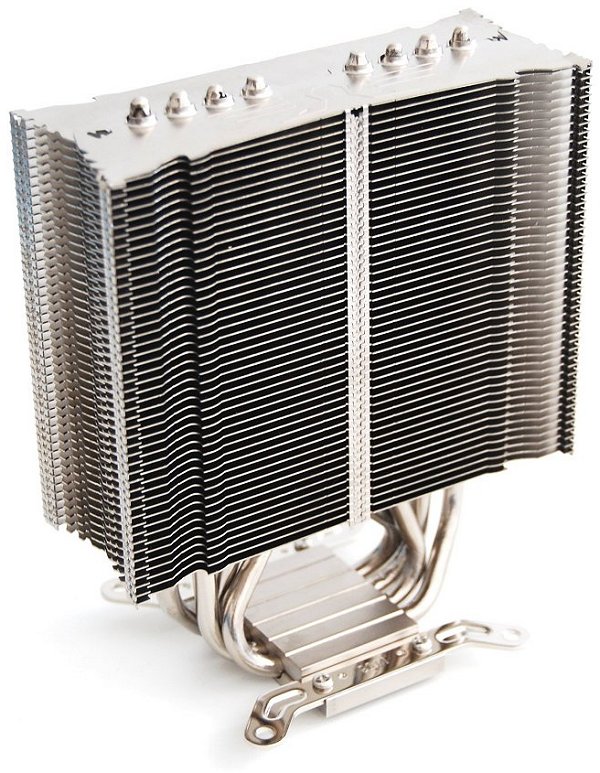


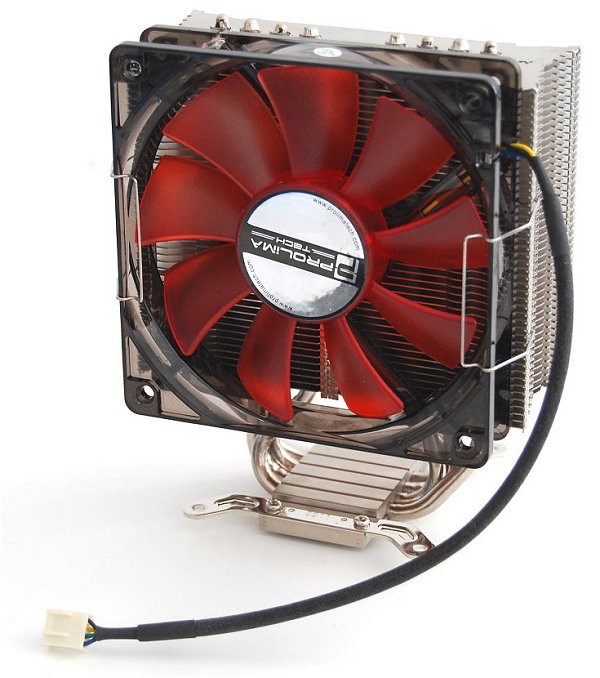

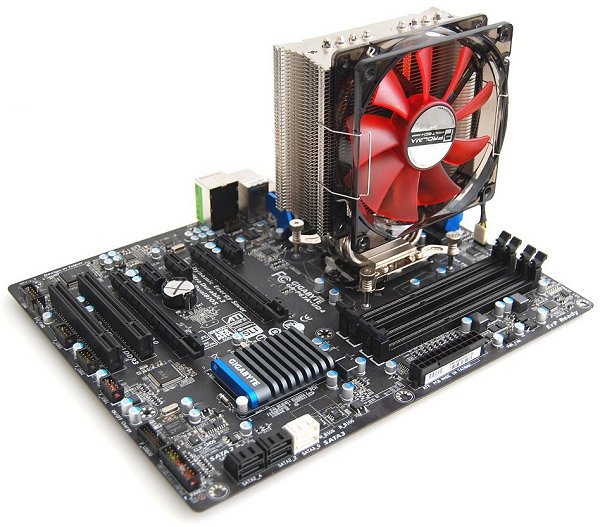

The company did very well for a number of years, but like Thermalright it seems Prolimatech has also been forced to go with the times and as such has begun developing budget-minded products.

The Panther comes at a more bearable $55 and even includes a 120mm fan and mounting kits supporting both AMD and Intel platforms. Last time we checked, Prolimatech was asking $75 for their high-end Genesis cooler which supports dual 140mm fans, but didn’t include a single one for that price.

However the two are not to be confused, as the new Panther and the older more expensive Genesis are two very different animals. Whereas the Genesis tips the scale at a meaty 800 grams, the Panther is nearly 30% lighter and that means a lot less area of dispersal of heat.


The Panther measures 130mm long, 50mm wide and 161mm tall making it a smaller than the True Spirit 140, though being 5% shorter does mean it will support a broader range of cases. It also only receives four 6mm copper heatpipes which have been nickel plated.


Included in the package is a 120mm red LED fan which spins at between 800 - 1600RPM depending on processor temperature, and mounting kits for AMD AM2/AM2+/AM3 and Intel LGA1155/1156 platforms. There are separate mounting brackets and back plates for AMD and Intel CPUs, while the Intel LGA775/1366/2011 platforms are not supported.


The installation is relatively straightforward with the Panther, though the user will require rear access to the motherboard tray. Overall we found the process to be quick and easy on both platforms. Given the design and size of the Panther we feel it should suit almost all motherboards.
No comments:
Post a Comment